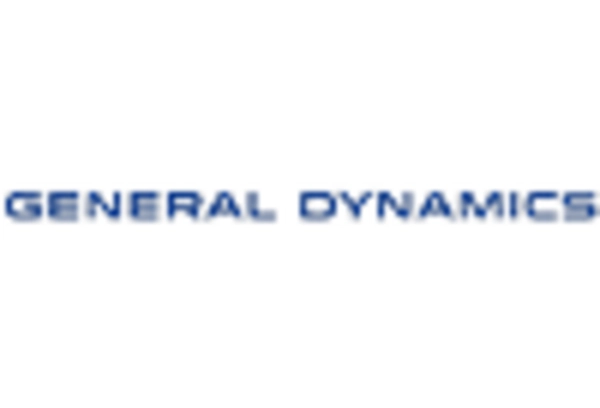In November 2023, Lockheed Martin plans to launch a new payload demonstrator called wideband electronically steerable antenna (ESA) on the Firefly Aerospace Alpha rocket. This demonstration aims to showcase how Lockheed Martin's technology may enhance the efficiency and speed of missions conducted in space. As per the company's announcement about the upcoming launch, the payload team anticipates that they will be able to calibrate this new ESA sensor much faster than traditional on-orbit sensors. Historically, it takes months to power on, fully calibrate, and prepare traditional sensors for their mission.
During this demonstration, the sensor was incorporated onto a Terran Orbital Nebula small satellite bus. The ESA payload, known as "Tantrum," is constructed utilizing a unique and adaptable design, incorporating dependable commercial components to enable efficient and rapid mass production. The initiative originates from Lockheed Martin Space's Ignite organization, a recently formed team with the objective of focusing on three primary missions: conducting exploratory research and development, expediting the advancement of technology, and presenting groundbreaking new products.
In June 2023, Druck, a Baker Hughes subsidiary and a prominent player in pressure measurement technology and equipment, unveiled the Druck NG3000 Pressure Sensors. These cutting-edge pressure sensors are specifically developed for the aircraft industry. Commercial and military aerospace customers now have the ability to use flight rated pressure sensors that can be easily configured within minutes using an online configurator tool. The Druck NG3000 Pressure Sensors by Baker Hughes have been meticulously engineered using advanced design tools to ensure the utmost accuracy and reliability.
These sensors incorporate the latest technology and offer customers the convenience of online configuration, eliminating the need for custom-made sensor solutions and the associated expenses and time constraints. Customers now have the ability to customize the configuration of Druck NG3000 Pressure Sensors according to their specific operating circumstances.
For Instance, May 2023
In order to identify businesses that may create novel speed-of-light sensors capable of collecting, characterizing, and transmitting nuclear weapon detonation events in gamma, electromagnetic pulse RF, and optical transmission light spectra, U.S. Air Force researchers are conducting a study of the market. Next-generation speed-of-light sensors are being developed in order to detect, characterize, and submit nuclear forensic data to national authorities.
For Instance, April 2023
In order to monitor the environment, U.S. military researchers are urging business to create quick-acting, dependable sensors that take use of microbes—tiny living creatures that are too tiny to be seen with the human eye. A broad agency announcement (HR001123S0027) for Tellus project, which aims to develop microbe-based sensors to keep an eye out for potential threats, pollutants, or changing environmental conditions, was released by DARPA officials in Arlington, Virginia, on Friday.
Tellus aims to define the range of chemical and physical stimuli, environmental conditions, options for the biologically encoded information processing, the kinds of output signals which can be generated, & theoretical stand-off/remote distances in which such signals can be detected by microbial sensors.
For Instance, April 2023
Recently, Slingshot Aerospace revealed plans for growing its Global Sensor Network, which would enable it to make 100 times more observations of the Low-Earth Orbit every day. Slingshot intends to deploy over 80 new optical sensors by the end of this year, including ultra-wide field of vision sensors and personal telescopes. With more than 20 locations throughout the world, this will increase the network's overall sensor count to more than 200. In addition to many already existing locations throughout the world getting new sensors, the expansion comprises two new sites in the Southern Hemisphere.
The business claimed that its Global Sensor Network produces exact brightness and angle data that adds extra context to the current LEO radar tracking capability. Five times as many observations are possible with proprietary daytime LEO tracking capability as with night-only technologies.
For Instance, February 2023 Northrop Grunman pioneer in the field of aerospace and defense technology has recently completed the integration and testing of its first Electronically-Scanned Multifunction Reconfigurable Integrated Sensor (EMRIS), a brand-new ultra-wideband sensor. The sophisticated multifunction sensors from Northrop Grumman, like EMRIS, help warfighters make decisions faster and work together.
For Instance, September 2022 Parker completes its acquisition of Meggitt PLC with 6.3 billion Euros. With the exception of one-time expenses and deal-related amortization, the merger is anticipated to improve organic growth, strengthen cash flow, and increase Parker's earnings per share. Meggitt will increase growth opportunities through commercial aerospace recovery, anticipated aircraft fleet renewal, and in emerging trends like electrification and low-carbon technologies. It will also add complementary technologies, increase Parker Aerospace's aftermarket mix through recurring revenue, and increase market share.
For Instance, June 2020 Among all industrial businesses, the U.S. aerospace industry continues to produce the greatest trade balance ($77.6 billion in 2019) and the second-highest volume of exports ($148 billion). With aerospace exports growing at an average rate of 5.31 percent over the past 10 years and the aerospace trade balance rising at an average rate of 4.64 percent since 2010, this dominant position has not changed in decades.

















Leave a Comment